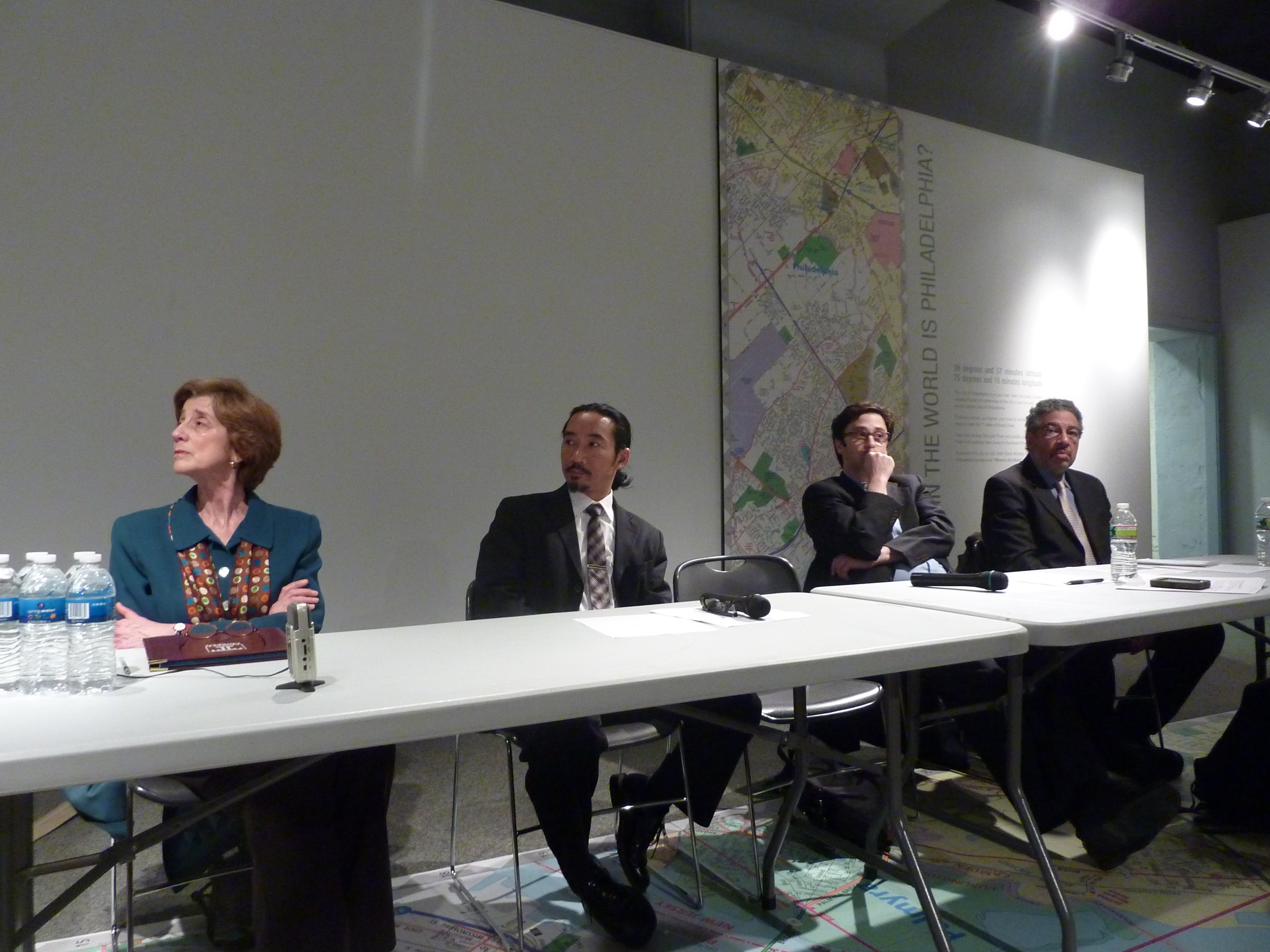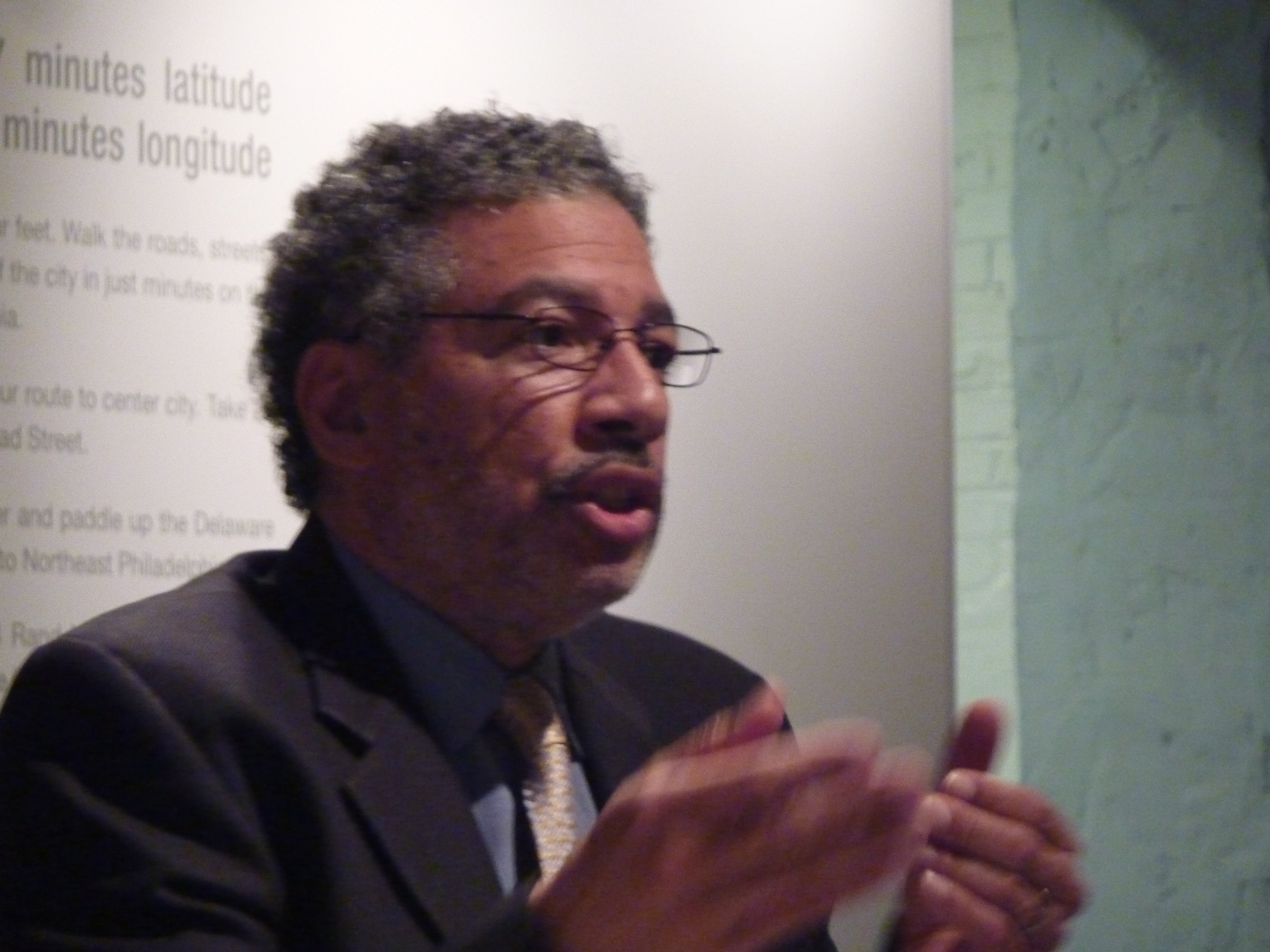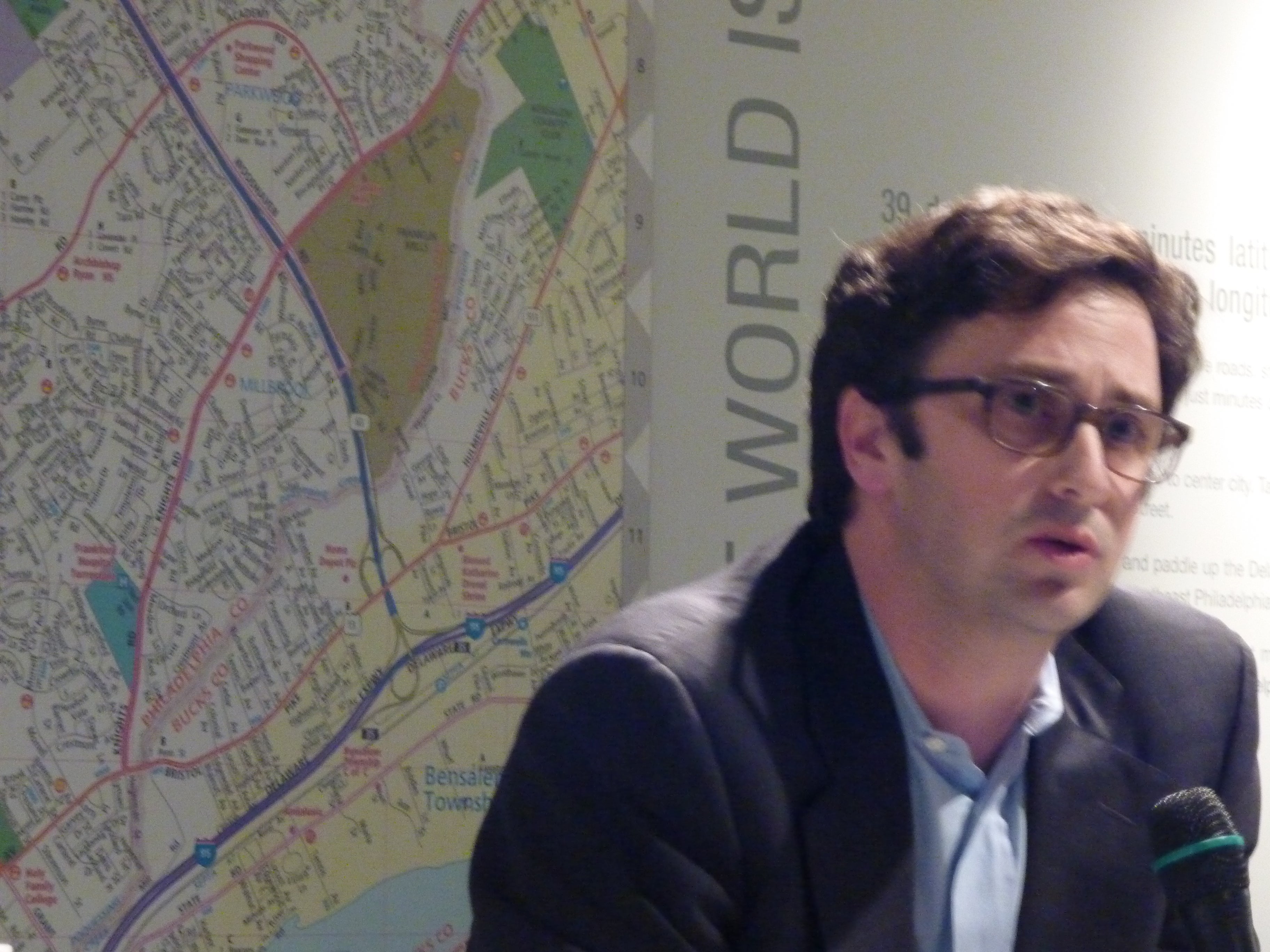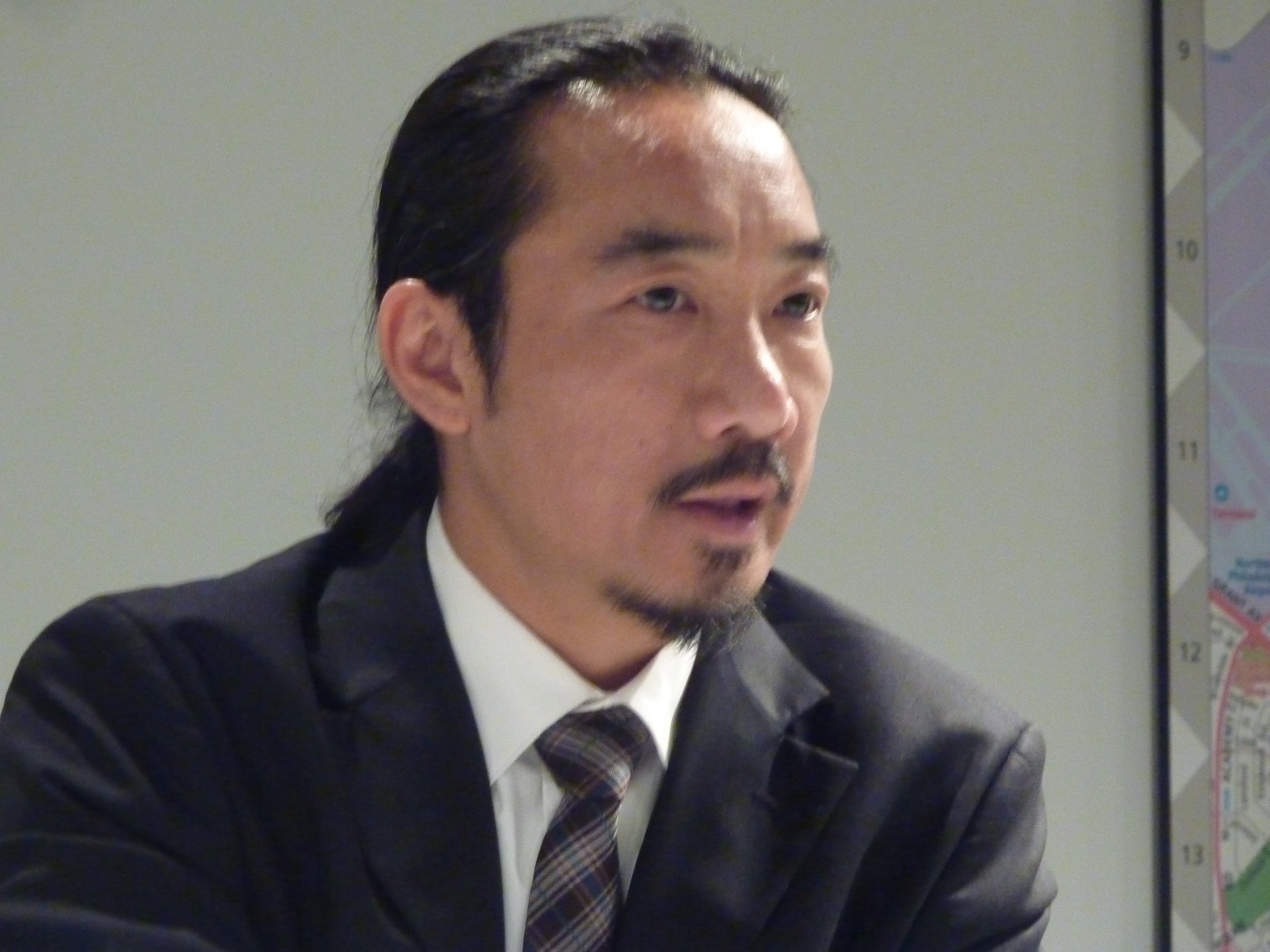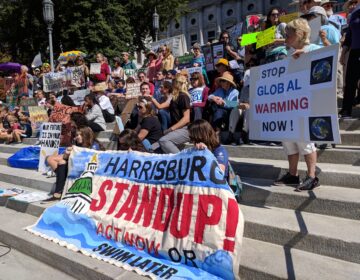Greater Philadelphia Roundtable: City of neighborhoods, city of homes
Last night’s concluding segment of the 10-series “Greater Philadelphia Roundtable,” presented by The Encyclopedia of Greater Philadelphia, sought to wrap up much of the previous proceedings with a presentation called “City of Neighborhoods, City of Homes.”
Held at the recently renovated (and renamed) Philadelphia History Museum at the Atwater Kent (to be officially unveiled in June), the panel riffed off of the Encyclopedia’s most recently added essay, which addressed the same topic.
Joining the essay’s author, Linn Washington, a journalism professor at Temple University, were Domenic Vitiello, a University of Pennsylvania city and regional planning professor, and Thoai Nguyen, of SEAMAAC, a community organization whose mission is to provide assistance to immigrant and refugee populations. The panel was moderated by Carolyn Adams, a professor of geography and urban studies at Temple.
Although panelists touched upon some of the points that Washington examined in his entry — everything from geographic boundaries to urban renewal — eventually the three seemed to settle on race and ethnicity as the driving forces (or, at least, the most interesting ones) in how neighborhoods develop and change.
Vitiello who specializes in studying immigration patterns, for example, spoke of growing up in Mt. Airy, where he still lives, and how he eventually came to understand how “very strange” the neighborhood was. Its ability to remain ethnically diverse through the decades is, he said, “exceptional,” making it one of just a handful in the country to do so.
Race baiting and the like, he said, had never been tolerated and person-to-person relationships had always been emphasized. There’s a lot of value, he said, in bringing people a welcoming “casserole”.
That casserole became a metaphor for one audience member from a South Philadelphia civic organization who later questioned how to explore the “casserole menu” for newcomers moving into her neighborhood. “How do we reach out to immigrants?” she asked. “What’s important to them?”
Nguyen suggested that finding help with language difficulties — perhaps by working with an organization such as his — and trying to understand cultural differences would go a long way. “For one thing,” he joked, “you probably shouldn’t bring a casserole.”
Nguyen also emphasized that “choice is not so easily afforded to vast segments of the immigrant population.” Still, said Vitiello, adding a note of hope, organizations like SEAMAAC and others have crafted a “politics of prosperity” that echoes the welcoming attitudes offered by Mayors Nutter and Street toward immigrants.
That idea was expanded upon in the question and answer period when an audience member pointed out that too often the idea of “success” is to move out of the city. “One of the wonderful things about Philadelphia is this idea of succession,” agreed Nguyen. “The Italian Market became Vietnamese and then they sold to Mexicans. So, now, do we call it the Mexican Market?”
This thread, naturally, led to talk of gentrification. “The older I get, the more I understand market forces,” said Washington. “But the role of government still bothers me. ” Neighborhoods shouldn’t be left “to fall down” around the poorer and more vulnerable, he said.
Vitiello wrapped the evening up by agreeing that current thinking on gentrification is not entirely negative. “The renters lose out — they have to move out,” he said. But poorer homeowners can sometimes fare better, if tax burdens are eased, and, of course, gentrification can bring with it commercial development and improved safety.
Still, Vitiello concluded, “we need to help manage it so there are fewer losers while we promote that sense of stability.”
Contact the reporter at jgreco@planphilly.com and follow her on Twitter @joanngreco
WHYY is your source for fact-based, in-depth journalism and information. As a nonprofit organization, we rely on financial support from readers like you. Please give today.



